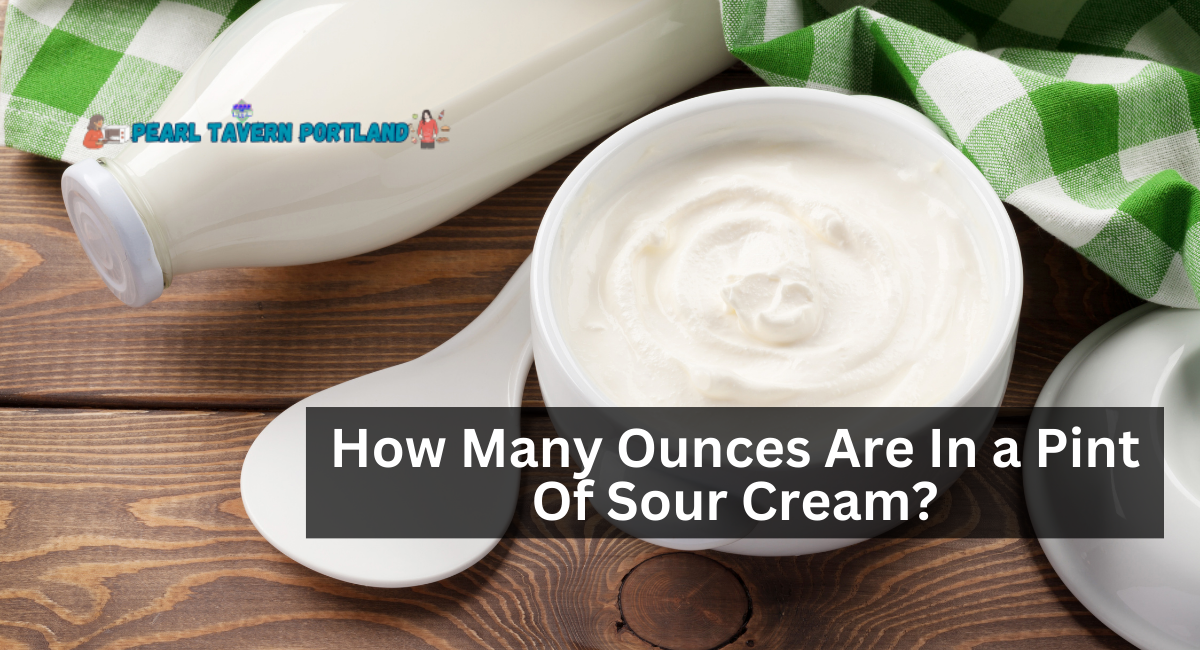Precision is essential in the realm of cooking and baking. Whether following a cherished family recipe or attempting a new culinary creation, knowing the precise measurements can differentiate between a delicious meal and a kitchen disaster. Understanding sour cream’s measurements, precisely how many ounces are in a pint, is essential for culinary success. This article examines the conversion of sour cream from pints to ounces and provides helpful cooking tips along the road.
What Is An Ounce?
An ounce is a unit of weight from the Roman word “uncia,” which means either the 12th part of an inch or a bronze Roman copper worth 1/12 of an ounce. However, the current idea of it in terms of weight and volume came from the United Kingdom.
The fluid ounce, which weighs precisely 28.3 grams, is the smallest unit of weight, representing 1/16 of an Imperial pint or 1/16 of a pound. An ounce is a unit of measurement that is more prevalent in the United States, where it is frequently used in pre-packaged consumables, shipping, postal items, and household items.
What Is a Pint?
It is a unit of measurement derived from the old French term pinte and the Latin term pincta, which both characterize markings on the sides of containers. A pint is commonly associated with beer in the United States. In addition, there are two common types of pints in the United States: the liquid pint, which is commonly defined as 16 fluid ounces, and the dry pint, which is 18.62 ounces.
So, precisely how much is a pint? A typical pint or standard glass of beer in the US customary measurement is 16 fluid ounces (473 milliliters). In contrast, according to the Imperial system, a pint contains 20 fluid ounces (568 milliliters).
What Is The Amount Of Ounces In A Pint Of Sour Cream?
Here it is, gentlemen: the response 16 fluid ounces constitute a pint of sour cream. I prefer using ounces because they are more precise than other dietary measurements. However, if you’re anything like me and make a novel dish daily, you’ll find cups, tablespoons, quarts, and pints in the recipes, not just ounces.
Measuring Sour Cream In a Jug
Sour cream is a strange type of cuisine with a strange consistency. It is difficult to measure because it is neither completely solid nor completely liquid.
A container designed for liquid measurements can be used to measure sour cream. This can be difficult because you must balance off the sour cream to ensure that you have the exact quantity required.
Place the jug on a work surface and stoop until it is at eye level. Then (carefully) spoon the sour cream into the gallon container.
This will enable you to see the measurements on the side of the jug more clearly, resulting in a more accurate measurement.
Tip: To help the sour cream settle, tap the container on the countertop several times and double-check the measurement. This will help eliminate any air pockets in the sour cream and allow it to settle, resulting in a level surface.
This method will result in a more accurate measurement.
Measuring Sour Cream in Spoons
The easiest way to measure sour cream is with a jug, but it is not necessarily the most accurate. Using measuring spoons is another method to measure sour cream.
Typically, measuring utensils are calibrated in cups. One pint of sour cream is equivalent to 2 glasses, so this can be converted.
To measure sour cream with measuring spoons and cups, just use the spoon to scoop the sour cream out of the jar.
Then, level it with a knife and hit it on the work surface. Similar to the container, this will settle the sour cream for a more precise measurement.
Buying Sour Cream
There are also available half-pint containers of sour cream. This is eight fluid ounces, so if you can locate them, you can buy two of these and be done!
There are a few factors to consider when purchasing sour cream. Like most dairy products, there will be “low fat” and “low sugar” variants. These may sound healthful, but they are not necessarily so.
Numerous low-fat dairy products may contain more sugar than expected. The flavor of dairy products can be drastically altered by reducing their fat content. Some manufacturers add additional sugar to compensate for this. Thus, the product is not healthier than it was previously.
If your recipe calls for full-fat sour cream, don’t assume that low-fat will be healthier, as there may be added carbohydrates, and the full-fat content may be necessary for the consistency of the final dish.
Using Sour Cream
There are a significant number of recipes that call for sour cream. Adding a touch of flavor, such as chives or herbs and spices, to sour cream is all required to make a delicious barbecue dip or potluck.
This is excellent if you’re expected to bring something to a gathering but lack the time (or skills) to make something complicated.
Even though sour cream may not sound enticing, it can be used in baking. This is not simply spoiled cream, despite what the word “sour” may suggest.
The addition of sour cream to crepes increases their thickness and fluffiness. If you prefer thick pancakes to narrow crepes, add some sour cream and a small amount of milk to the pancake mix to elevate them.
As a substitute for buttermilk, sour cream can also be used. Sour cream can be a wonderful substitute for buttermilk, which is not always readily available. Sour cream, like buttermilk, is made by letting cream ferment with lactic acid bacteria.
If you substitute buttermilk with sour cream, remember that the two ingredients have similar flavors but distinct textures.
Combine sour cream with water or milk to achieve a leaner consistency, as it is significantly thicker than buttermilk.
Health Benefits of Sour Cream
Here is the health benefits of sour cream:
- Nutrient content: Sour cream is a rich source of essential nutrients, including calcium, vitamin B12, and riboflavin. Calcium is needed to keep bones and teeth strong, while vitamin B12 is needed for brain function and to make red blood cells.
- Probiotics: Since sour cream is a fermented dairy product, it contains probiotics, which are beneficial bacteria that support digestive health. Probiotics may aid in enhancing digestion, boosting the immune system, and preserving a healthy gut flora balance.
- Protein: Sour cream has a moderate amount of protein, which is needed to build and repair tissues, boost the immune system, and keep muscle strength.
- Healthy fats: Sour cream has fatty fats, which can be good for you in small amounts. Saturated fats are important for many bodily processes, like making hormones and keeping cell membranes in place.
- Energy source: Sour cream’s fat and calorie content can provide energy, which can be particularly important for individuals with high energy needs, such as athletes or those with physically demanding jobs.
- Palatability: While not a direct health benefit, the creamy and tangy flavor of sour cream can make healthy foods, such as vegetables and whole cereals, more palatable, thereby encouraging people to include them in their diet.
Thanks for visiting our site hope you like it ..










